Design Patterns
A design pattern systematically names, motivates, and explains a general design that addresses a recurring design problem in object-oriented systems…The solution is a general arrangement of objects and classes that solve the problem. - Design Patterns
Good object-oriented software design tends to encourage interfaces and favor composition over inheritance. Inheritance is white-box reuse. Composition is black-box reuse. Design Patterns also distinguishes between aggregation and composition. Aggregation suggests looser coupling where the objects may live independently. Composition is a tighter relationship where if one object is destroyed, so are the contained objects (i.e. ownership)
Information on this page is mostly taken from Design Patterns by Gamma, Helm, Johnson, and Vlissides.
TODO Adapter structural
TODO Builder creational
Composite structural
The composite design pattern composes objects into tree structures to represent part-whole hierarchies. Composite lets clients tread individual objects and compositions of object uniformly.
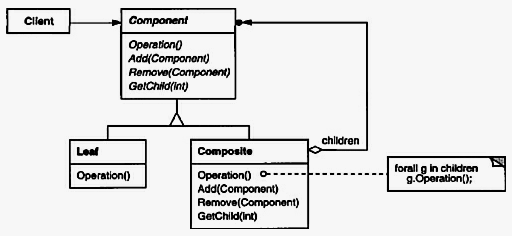
For example, a drawing application has graphical primitives such as Text,
Rectangle, and Line plus other classes that act as containers for these
primitives (e.g. Pictures). Most approaches would treat primitives and
containers differently, even if most of the time the user treats them
identically.
The key to the composite pattern is an abstract class that represents both
primitives and their containers. In our example, this class is
Graphic. Graphic declares operations like draw that all graphical
objects implement. It also declares operations that all composite object
share, such as operations for accessing and managing children.
Chain of Responsibility behavioral
The chain of responsibility design pattern avoids coupling the sender of a request to its receiver by giving more than one object a chance to handle the request. Chain the receiving objects and pass the request along the chain until an object handles it. Use this pattern when more than one object may handle a request, and the handler isn't known a priori. This pattern is also useful when the set of objects that can handle a request should be specified dynamically.
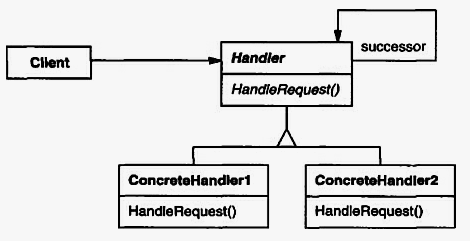
The object that made the request has no explicit knowledge of who will handle it. Each object in the chain shares a common interface for handling requests and for accessing its successor on the chain. A typical object structure might look like this:

TODO Decorator structural
TODO Dependency Injection creational
Facade structural
The facade design pattern provides a unified interface to a set of interfaces in a subsystem. Facade defines a higher-level interface that makes the subsystem easier to use.
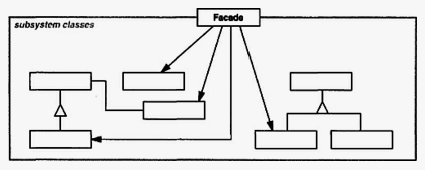
The facade knows which subsystem classes are responsible for a request and delegates to the appropriate subsystem. The subsystem has no knowledge of the facade.
TODO Factory Method creational
Iterator behavioral
The iterator design pattern provides a way to access the elements of an aggregate object sequentially without exposing underlying representation.
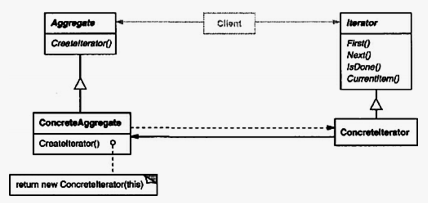
The pattern's key idea is to take the responsibility for access and traversal
out of the object and put it into an iterator object. The Iterator class
defines an interface for accessing the elements.
TODO Mediator behavioral
TODO Memento behavioral
Observer behavioral
The observer design pattern (also known as publish-subscribe) defines a one-to-many dependency between objects so that when on object changes state, all its dependents are notified and updated automatically. This pattern maintains consistency while keeping classes loosely coupled.
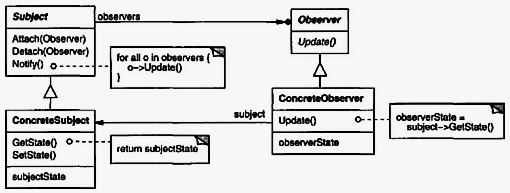
The key objects in this pattern are subject and observer. A subject may have any number of dependent observers. All observers are notified whenever the subject undergoes a change in state. In response, each observer will query the subject to synchronize its state with the subject's state.
Singleton creational
It's important for some classes to have exactly one instance. The singleton design pattern ensures a class only has one instance, and provides a global point of access to it.
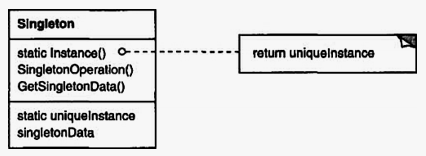
A global variable makes an object accessible, but it doesn't keep you from instantiating multiple objects. Therefore, the class itself should be responsible for keeping track of its sole instance.